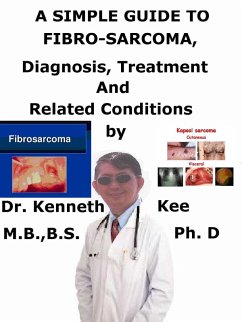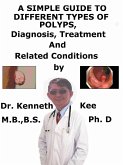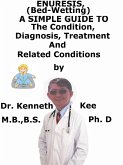Sarcoma is the cancer that starts in the soft tissues of the body.
The soft tissues are the connective tissues that maintain everything in place, such as:
1. Nerves, tendons, and ligaments
2. Fibrous and deep skin tissues
3. Blood and lymph vessels
4. Fat and muscle
Soft tissue sarcomas consist of more than 50 types.
Fibro-sarcoma comprises about 5 percent of primary bone sarcomas.
It is infrequent, involving about 1 in 2 million people.
Fibro-sarcoma is so named since it is made of malignant spindled fibroblasts or myofibroblasts.
It has its beginning in the fibrous tissue that encloses tendons, ligaments, and muscles.
While it can originate in any area of the body, it is most frequent in the legs or trunk.
Fibro-sarcomas are considered a malignant neoplasm composed of fibroblasts that may have differing quantities of collagen production and having 'herringbone' architecture.
Fibro-sarcomas can be sub-classified into 2 types:
1. Infantile or congenital fibro-sarcomas, or
2. Adult-type fibro-sarcomas.
Infantile fibro-sarcomas seldom metastasize while adult-type fibro-sarcomas are very malignant.
In infants under the age of 1, it is termed infantile fibro-sarcoma (IFS) and is normally slow-growing.
Infantile Fibro-sarcoma is a malignant tumor of infancy normally seen in children below age 1.
The most frequent site of the tumor is the arms and legs followed next by the trunk.
In older children and adults, it is termed adult form fibro-sarcoma.
Adult Fibro-sarcoma often involves the deep soft tissues of the extremities, trunk, head, and neck.
The exact cause of fibro-sarcoma is not known but genetics may play a role.
Certain factors may raise the danger of developing the disease, such as some inherited disorders:
Familial adenomatous polyposis
Li-Fraumeni syndrome
Neurofibromatosis type 1
Other risk factors may be:
Previous radiation therapy
Certain chemicals, such as thorium dioxide, vinyl chloride, or arsenic
Lymph edema, a swelling in the arms and legs
The symptoms of fibro-sarcoma can be faint at first.
The patient might notice a painless lump or swelling under the skin.
As it develops, it can disrupt the ability to use the limb.
If it begins in the abdomen, the patient probably will not notice until it is of significant size.
Fibro-sarcoma tumors normally vary from 3-8 cm in size.
Molecular analysis of the tumor is done to detect the fusion of ETV6 and NTRK3 genes; such detection of this particular mutation can help confirm a diagnosis of Infantile Fibro-sarcoma.
A diagnosis of Fibro-sarcoma is normally established by excluding the possibility of other tumors.
It is a diagnosis made through exclusion and may involve the imaging tests.
Contrast-enhanced MRI is the favored method to evaluate tumors of the extremities or pelvis and will provide data of a tumor's size, margins, signal density, degree of necrosis and vascularization.
If a mass is detected, the only way to confirm fibro-sarcoma is with a biopsy.
Surgical excision is the main treatment for localized fibro-sarcomas.
Intramuscular tumors should have a compartmental total excision.
If there is extra-compartmental growth, or if the tumor has not reach the insertion of the muscle, a wide-surgical resection would be proper, with the aim of obtaining tumor-free margins.
The prognosis of fibro-sarcomas is poor.
The 5-year survival rates for high-grade fibro-sarcomas are about 30%
TABLE OF CONTENT
Introduction
Chapter 1 Fibro-sarcoma
Chapter 2 Causes
Chapter 3 Symptoms
Chapter 4 Diagnosis
Chapter 5 Treatme...
Dieser Download kann aus rechtlichen Gründen nur mit Rechnungsadresse in A, B, CY, CZ, D, DK, EW, E, FIN, F, GR, H, IRL, I, LT, L, LR, M, NL, PL, P, R, S, SLO, SK ausgeliefert werden.









